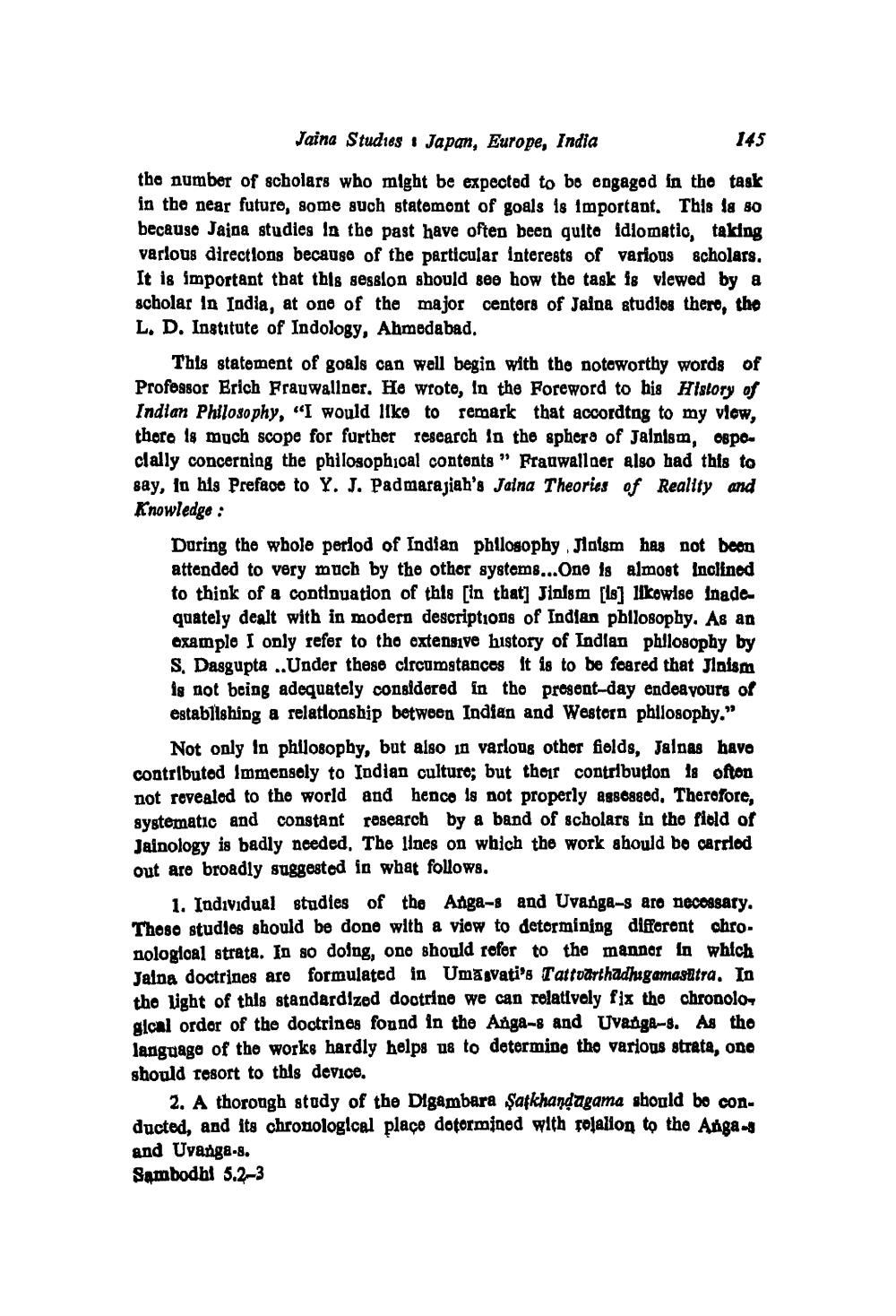________________
Jaina Studies
Japan, Europe, India
145
the number of scholars who might be expected to bo engagod in the task in the near futuro, some such statement of goals is important. This la so because Jajna studies la the past have often been quite idiomatio, taking varlous directions because of the particular interests of various scholars. It is important that this session should see how the task is viewed by a scholar la India, at one of the major centers of Jaina studios there, the L. D. Institute of Indology, Ahmedabad.
This statement of goals can well begin with the noteworthy words of Professor Erich Frauwallnor. He wrote, in the Foreword to his History of Indian Philosophy, "I would like to remark that accordtng to my view, thora 18 much scope for further research in the sphere of Jainism, ospo. clally concerning the philosophical contents" Frauwallaer also had this to say, la his Preface to Y. J. Padmarajiah's Jaina Theories of Reality and Knowledge :
During the whole period of Indian philosophy. Jlnism has not been attended to very much by the othor systems...One is almost inclined to think of a continuation of this [in that] Jinism [18] likewise inade quately dealt with in modern descriptions of Indian philosophy. As an example I only refer to the extensive history of Indian phllosophy by S. Dasgupta ..Under these circumstances it is to be foared that Jlniam is not being adequately considered in the present-day endeavours of establishing a relationship between Indian and Western philosophy."
Not only in philosophy, but also in varlous othor fields, Jalnas havo contributod Immonsoly to Indian culturo; but thor contribution 18 ofton not revealed to the world and hence is not properly 488088ed. Therefore, systematic and constant research by a band of scholars in the field of Jainology is badly needed. The lines on which the work should be carrlod out are broadly suggested in what follows.
1. Individual studies of the Anga-8 and Uvanga-s aro necessary. Those studies should be done with a viow to determining different chronological strata. In so doing, one should refer to the manner in which Jalna doctrines are formulated in Umagvati's Tattoärthadhigamasutra. In the light of this standardized doctrine we can relatively fix the chronolo, alcal order of the doctrines found in the Anga-8 and Uvanga-s. As tho language of the works hardly helps us to determine tho various strata, ono should resort to this device.
2. A thorongh stody of the Digambara şafkhandagama should be conducted, and its chronological place dotormined with folalion to the Anga. and Uvanga-s. Sambodhl 5.2-3




